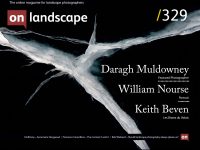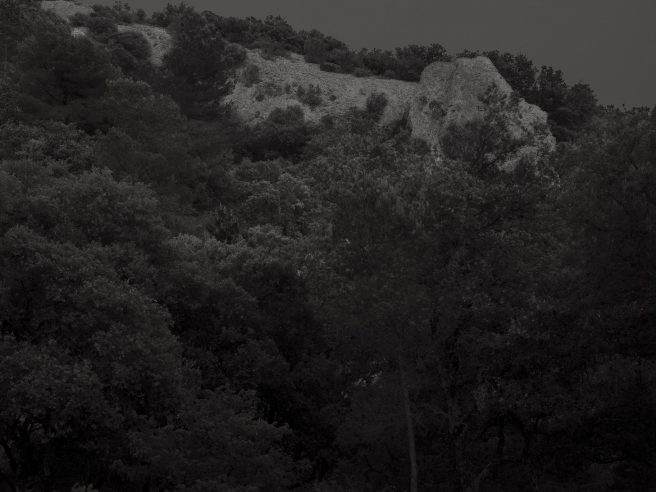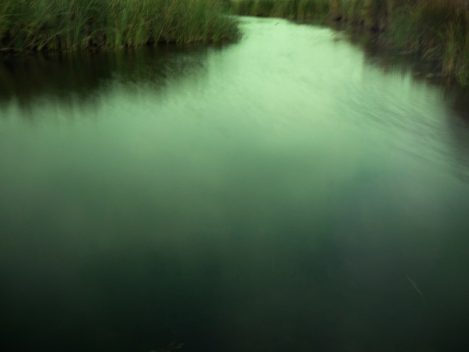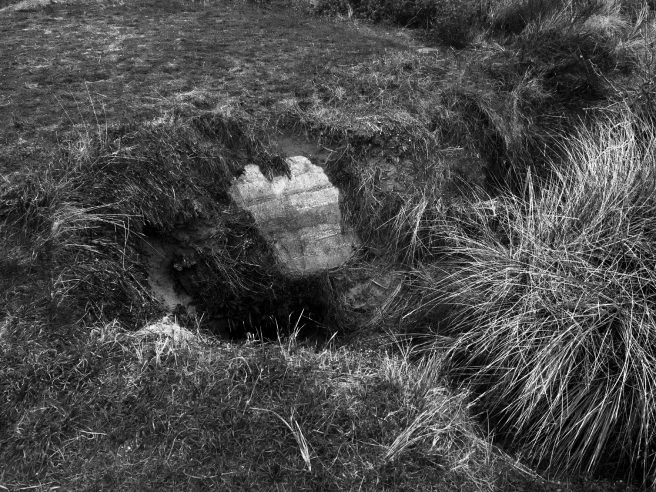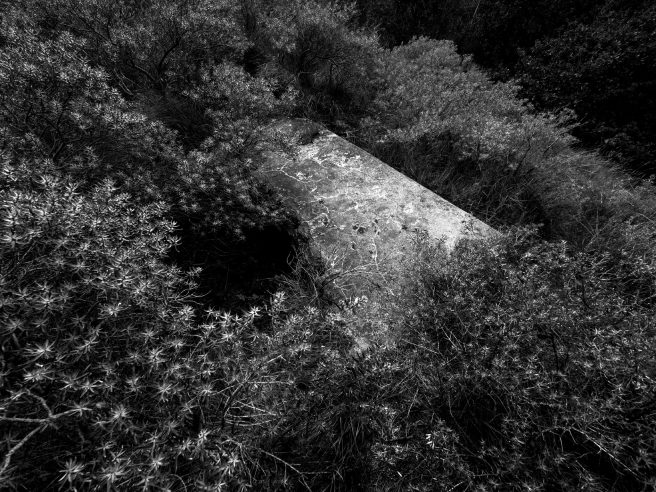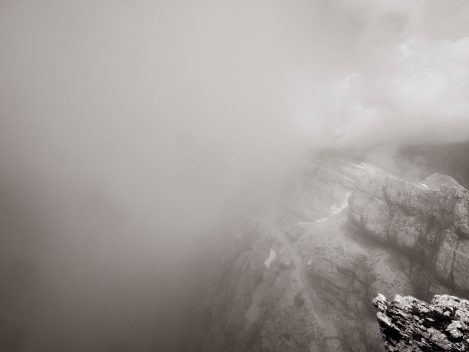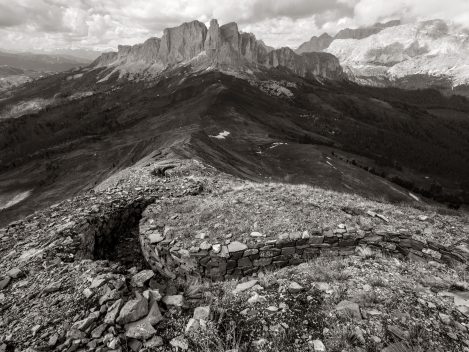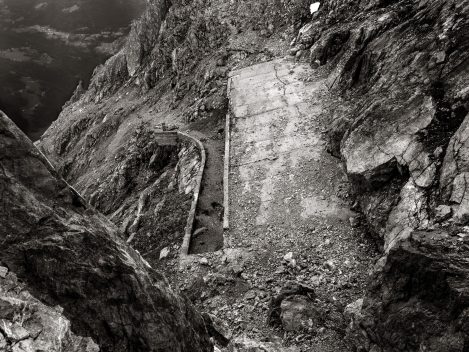How great and vulnerable the world can be

Bob Wielaard
Bob is a photographer and furniture designer living in the Netherlands. Photographing the landscape is a quest through the world he is living in. As a perfect combination with hiking he explores the land for its beauty, history, presence and absence of man. After graduating from School of Art, photography plays an increasingly important part. Working ‘out of doors’ he continually discovers what a landscape means to him. His pictures are mainly black and white and recently he decided to return to film and darkroom again.
To start with a direct answer, I would say there is nothing wrong with landscape pictures that please us. Every issue of On Landscape features stunning pictures of pristine and wild landscapes.
I can look at them with great pleasure and admire the makers’ skills. And to be honest, these are often skills that I lack. I don’t have the patience to wait for the right light, etc. But would I really want those skills? I discovered that I am often more fascinated by pictures that I don’t immediately recognize or understand—no ‘celebration of recognition’. Or I wonder why the photographer made this picture, and I am caught by the question, ‘What is it?’
This started with my first experiences while being outdoors with the ambitious intention to make ‘good, impressive pictures’ (I stopped photographing for some years when digital techniques appeared). Outdoors meant with a backpack, several days self-sufficient through the Scottish Highlands. This way of travelling is always a mixture of excitement, loneliness, musing and desire. Without a doubt I can travel stimulated by wanderlust,‘fernweh’and with the undermining burden of homesickness. Elusive and contradictory.
Maybe because I live in a flat country, all mountains make a big impression, something I cannot comprehend. And, maybe also because of the way I travel, this landscape is sometimes beautiful and sometimes threatening. Slightly disconcerting, no protection. The space and silence are overwhelming, I can feel welcome, and I can feel completely lost.
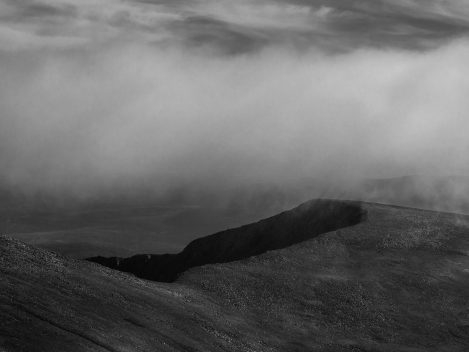
Cairngorms, the making of this picture was determined by conflicting emotions, the overwhelming impression of the land, the feeling of being lost but with the paradoxical sensation of how beautiful this experience is, in this powerful land, the rising and disappearing fog.
Somehow, I wanted to see these mixed emotions in the pictures. However, initially, every time I looked through the viewfinder, I could never capture this feeling, as if it disappeared at the moment I wanted to make a picture. Looking back, it was always disappointing. I had no idea what was going on. It seemed that I had to rediscover photography again.
Doubts. Lots of doubts. Later, I understood that I needed those doubts to discover my way of making pictures. For a long time, I always made pictures of things. Buildings mostly. What I was now looking for, but wasn’t fully aware of yet, was something that is nothing. Resulting in the question of what a landscape actually is. What a landscape photo is.
Making plans, setting goals. Knowing where to go to and knowing exactly why. However, an interesting thing that can happen is an unexpected change in topic. Some years ago, driven by the text and reflections of Petrarch, I visited Mont Ventoux. Walking through woods and steep stony planes, reaching for the top. Making photos up there had to be wonderful. But what I didn’t know was that my personal journey had yet to begin. At the start of the descent, I was tired and thirsty. Halfway through and in the beginning of twilight I passed some caves. This was a bit scary, uncanny at this time of day. But as caves are, they also provide shelter. The darkness, the shape of the rocks and small traces of people became an uncomfortable but irresistibly more attractive subject to photograph. A little uneasy with the suspicion that a monster could appear at any moment. But what seemed more likely was an unexpected reflection of myself.
As we know, it’s not always the destination where you are heading for, but the road that leads you there. You think you know what to show from the earth, but what is the earth asking you to show?

Unexpected caves during the descent of Mont Ventoux and a monster that appears at the end (with rustling sounds of wild boars).
What also brought me to the big question is to what extent we, as landscape photographers, are responsible for showing what is happening in nature today. Climate change and global warming, whether caused by humans or not, can no longer be denied. The immense use of raw materials we extract from the earth will never return to their original state and place. The consequences will be devastating in a relatively short time, which is absolutely worrying. How do we deal with that?
So, one thing is showing great nature photos. Impressive beautiful pictures, hoping this leads to awareness and change in behaviour. That we realize how great and vulnerable the world can be and that the world is the measure of everything. This is one approach. Confronting ourselves immediately and explicitly with the brutal consequences of what we do, is another.
Somehow, perhaps caused by an introverted character, I am looking for a kind of consideration. I don’t have the intention to literally show what is going on. I prefer pictures that are open for interpretation. Taking a step back, making room for introspection. It is not about the ‘how’ and ‘why’ in the world, but the fact that we are here and that we can be aware of that. I can find that extremely fascinating.
In this I discovered the profound significance of history and events in relation to landscape. Landscape and history became an important guide that led met to the subject of some of my photography. This started with a series of bunker pictures I made in the dunes and flatlands of my country. Unsatisfied by the more or less documentary style of the first pictures (‘thing – pictures’), I started looking for what really captivated me about these buildings. Violence is an abomination to me and I see a bunker as a rude intervention in the landscape. I sometimes work in grey light conditions and many times I had the experience of how ‘unheimisch’, eerie these buildings are in the landscape. But somehow it is in these circumstances that the bunkers show their true nature. Wandering through the country I discovered that what fascinated me was the contrast between the visible beauty of this country and the hidden history of atrocities. So the bunkers became a metaphor of who we are and how we treat the land. And so there appeared my landscape photography: a visual story of beautiful landscape, history, events and memory.
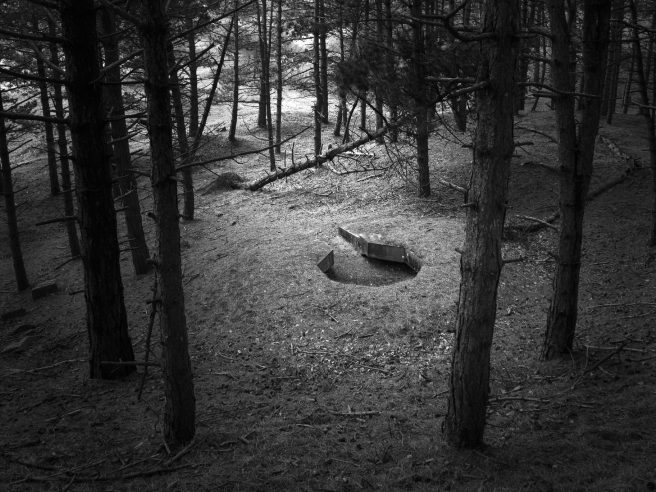
Land and Traces. A project about land and history. How do beauty and atrocities in the landscape relate to each other?
Somehow, taking a step back, I find it necessary to become aware of our existence and our relation to the world. And that, in my opinion, by now we have a disturbed relation with nature, a different way of life and behaviour as a result of the Neolithic Revolution. And I doubt if we are capable of changing this. I am not suggesting here that we should go back hunting and gathering again –although some politicians already seem to exhibit this behaviour- but we are faced with the task, the challenge of coming up with something new, of reinventing ourselves.
While writing this article, I’m doing some research for the next project, which will be a continuation of the land and bunker project. For this, I want to visit the borders of Italy, Austria and Slovenia. Great mountain areas with a lot of history and remains of buildings from the First World War. It is unimaginable that they built and fought on mountains above 7,000 feet.
The increasing use of all kinds of digital screens has created even more distance from the world (nature and people) around us. And perhaps, due to a slight but increasing resistance, the desire arose to start working with film again. Can’t explain exactly what it was, a wish to see photography more as a craft next to digital work. Also, I have never seen a digital black and white print that had the feel of a gelatin silver print. So what to do?
The very beginning of this all was making my own 6 x 12 camera. Well, 18 months later, I had to make the enlarger myself too, it seems I have now completely returned to film. Impossible to stop myself. It’s still experimenting and discovering, because this working method forces me to look again, to rediscover the subject matter.
The camera, the film, the landscape, making composition under a black cloth, making prints in the dark room. There are no digital screens under that black cloth, only the ground glass. And time passes more slowly.
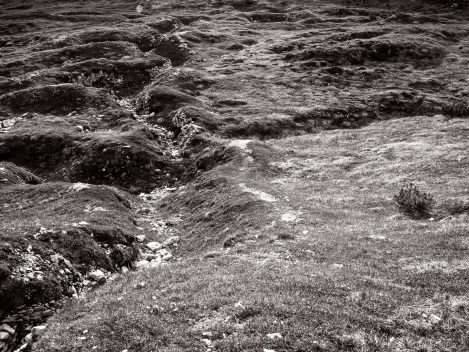
Landscape and memory, the border area of the First World War. Also here a landscape of great beauty and dark history.
It’s all slow but it feels intense, real. As a preparation, another trip to the Scottish Highlands is planned, before I travel to the historic grounds of Italy and Slovenia. And I have to prepare myself for a backpack with a big camera. But I can hardly wait to discover the country and what the earth will show me to photograph. And I have no idea if these photos will please us.
- Land and Traces. A project about land and history. How do beauty and atrocities in the landscape relate to each other?
- Tears of the Rhine. A series about the old courses of the river Rhine.
- Unexpected caves during the descent of Mont Ventoux and a monster that appears at the end (with rustling sounds of wild boars).
- Unexpected caves during the descent of Mont Ventoux and a monster that appears at the end (with rustling sounds of wild boars).
- Cairngorms, the making of this picture was determined by conflicting emotions, the overwhelming impression of the land, the feeling of being lost but with the paradoxical sensation of how beautiful this experience is, in this powerful land, the rising and disappearing fog.

